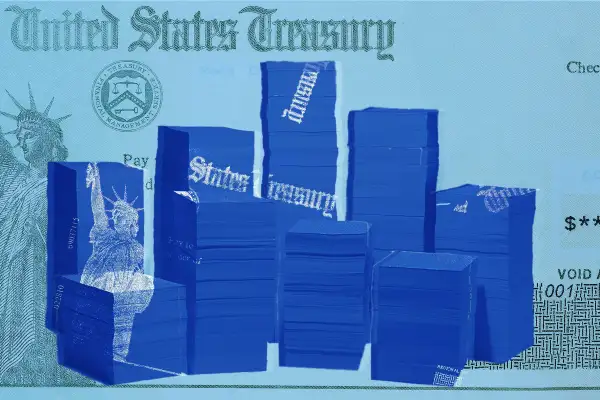Millions of People Still Haven't Claimed Their 2021 Stimulus Checks

Millions of taxpayers still haven't claimed 2021 stimulus money that’s still on the table, according to a recent report.
The U.S. government issued more than $930 billion in direct Economic Impact Payments as part of its COVID-19 relief efforts, sending out three rounds of stimulus checks: up to $1,200 per adult in April 2020, $600 in December 2020 and $1,400 in March 2021. These stimulus checks were technically advance payments of a fully refundable tax credit called the Recovery Rebate Credit. The credit was available for tax years 2020 and 2021, meaning that folks who didn't initially get their stimulus checks could have claimed them on the tax returns filed in spring 2021 and 2022.
Now, in a review of 2021 tax returns, the Treasury Inspector General for Tax Administration — an organization that oversees the IRS — has discovered that almost 3 million people may be able to receive part of $4.7 billion in unclaimed Recovery Rebate Credits.
Generally, taxpayers have three years from the time they filed their return to claim a credit or refund (or two years from the time the tax was paid, whichever is later), and taxpayers who didn't file a return have three years.
The government confirmed earlier this year that all three rounds of stimulus payments had been sent out. And although the vast majority of Americans have already received the correct amount of stimulus money, there are some taxpayers who never received their third payment or did not get the full amount.
These taxpayers may have another chance to claim it by filing or amending their 2021 tax return.
Am I still eligible for a 2021 stimulus check?
The TIGTA report says about 2.9 million individual taxpayers filed 2021 tax returns without claiming the Recovery Rebate Credit — and may qualify for it.
Given that the IRS recently received new funding, the agency recommends it ramp up its "efforts to encourage potentially eligible individuals to file a tax return or file an amended return and claim the RRC."
For the most part, eligibility for the 2021 Recovery Rebate Credit is the same as that of the third stimulus payments, which were based on your 2019 or 2020 tax year information. Eligible single taxpayers were able to receive as much as $1,400 ($2,800 for married couples) and $1,400 for each qualifying dependent with a valid Social Security number. Income limits applied.
The IRS has been trying to get those funds in taxpayers' hands. It mailed out Letter 6475 in January 2022 confirming the total amount of the third stimulus payment and any plus-up payments received so people could figure out whether to claim the Recovery Rebate Credit on their 2021 tax returns. (Plus-up payments were supplemental funds for taxpayers who, based on data in their 2020 tax returns, qualified for additional money.)
The IRS has also agreed to continue sending information periodically on the availability of the credit and how to claim, per TIGTA’s recommendation.
In general, you aren’t eligible to claim the Recovery Rebate Credit if you could be claimed as a dependent on another taxpayer’s 2021 tax return, you’re not a U.S. citizen or don’t have a valid Social Security number.
But if you didn’t qualify for the third stimulus check or the full amount previously — or you simply forgot — you may be eligible to claim the Recovery Rebate Credit now.
For instance, if your income exceeded the limits in 2019 or 2020, but decreased significantly in 2021, you may be entitled to the full payment. People who had a child in 2021 or added a dependent to their families may also qualify.
How can I claim the Recovery Rebate Credit for 2021?
If you didn’t receive the full amount of the third stimulus payment and think you're eligible, you need to file a tax return for that year claiming the Recovery Rebate Credit — even if you’re usually a non-filer.
The IRS typically allows taxpayers to claim credits up to three years to claim a refund, which means you have until the deadline for tax year 2024 (which will be in spring 2025) to submit or amend your 2021 return. An IRS spokesperson confirmed to Money that the three-year window applies to this credit.
The easiest way to file your return is electronically, and along with your return, you’ll have to complete and submit the Form 1040 Recovery Rebate Credit worksheet. The worksheet will ask for your adjusted gross income and how much of the third stimulus payment you, your spouse and dependents received, so be sure to have that handy.
You can amend a previously filed return using a Form 1040-X.
Generally, it takes the IRS a couple weeks to process tax returns filed electronically and eight to 10 weeks for paper returns. If you’re eligible for the credit, your taxes will either be reduced or you’ll receive the funds as part of a tax refund.
More from Money:
Here’s How Much Debt the Average American Has in 2023
5 Best Tax Relief Companies of 2023
Why 'Girl Math' Can Actually Make a Lot of Sense for Your Money


